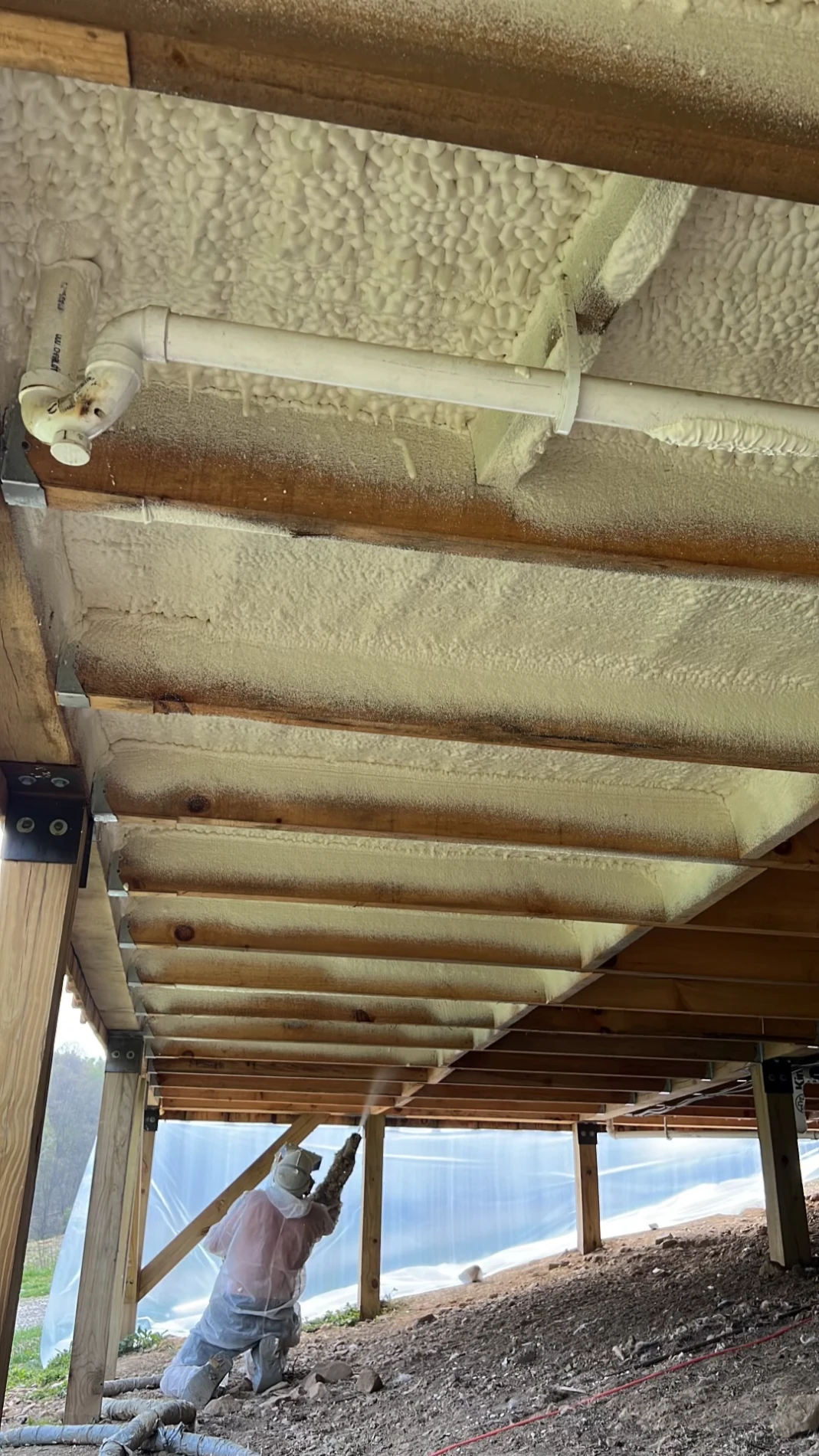
Spray foam insulation significantly improves energy efficiency, air sealing, and moisture resistance in residential, commercial, and agricultural buildings. In Zanesville, OH, where seasonal temperature swings are common, upgrading to spray foam can deliver measurable long-term benefits over traditional insulation types.
This article outlines five key reasons to consider spray foam insulation. It includes verified data, practical experience, and technical comparisons relevant to the Ohio Valley region. Ohio Valley Spray Foam has extensive experience working with closed-cell and open-cell systems across varying structures in the local climate.
Spray foam provides higher R-values per inch than traditional insulation materials, minimizing heat transfer during both hot summers and cold winters in Zanesville. Closed-cell spray foam creates a denser, more rigid barrier, offering effective thermal resistance and structural support.
Bonus Tip: In regions with high humidity, closed-cell foam helps reduce moisture ingress that can degrade fiberglass or cellulose over time.
| Insulation Type | R-Value per Inch | Air Seal Capabilities | Water Resistance | Structural Strength |
|---|---|---|---|---|
| Closed-Cell Spray Foam | 6.5 | Excellent | High | High |
| Open-Cell Spray Foam | 3.6 | Excellent | Low | Moderate |
| Blown-In Fiberglass | 2.2 – 2.7 | Poor | Low | None |
Unsealed gaps and cracks lead to air loss and increased HVAC load. Spray foam expands to fill cavities, preventing drafts and reducing the need for continuous heating or cooling. Homes in Muskingum County using spray foam report 20-30% lower energy bills (Source: U.S. Department of Energy, 2023).
| Factor | Traditional Insulation | Spray Foam (Closed/Open Cell) |
|---|---|---|
| Annual HVAC Cost Impact | High | Lower (by 20-30%) |
| Cold Draft Resistance | Inconsistent | Strong |
| Air Leakage Reduction | Minimal | Significant |
Bonus Tip: Seal attic penetrations and rim joists with closed-cell foam for maximum air control.
Zanesville’s precipitation averages over 40 inches annually. This makes moisture management a priority. Closed-cell spray foam resists water absorption, making it suitable for crawl spaces, basements, and pole barns prone to damp conditions.
| Location Type | Recommended Foam Type | Reason |
|---|---|---|
| Crawl Spaces | Closed-Cell | High moisture resistance |
| Attics | Open-Cell | Permeable, cost-effective |
| Agricultural Barns | Closed-Cell | Durable under condensation |
Unlike fiberglass that settles or degrades, spray foam retains shape and performance over decades. It adheres directly to surfaces and does not sag, compress, or require frequent inspection.
| Insulation Type | Estimated Lifespan | Maintenance Needs |
|---|---|---|
| Closed-Cell Spray Foam | 50+ years | Very Low |
| Open-Cell Spray Foam | 30-40 years | Low |
| Blown-In Fiberglass | 15-25 years | Medium (re-leveling) |

Spray foam conforms to irregular framing, tight cavities, and curved surfaces. In older Zanesville homes with unique layouts or in pole barns with open spans, spray foam achieves full cavity coverage without added framing or support.
Bonus Tip: Use open-cell foam in interior walls to reduce sound transmission while preserving flexibility in tight framing layouts.
Ohio Valley Spray Foam offers solutions directly aligned with insulation improvements in Zanesville:
Yes. It can be installed over or in place of old materials, provided moisture issues are resolved beforehand.
Most residential jobs in Zanesville are completed in one to two days, depending on structure size.
After curing (typically 24 hours), it becomes inert and safe for living or working environments.
Open-cell is cheaper upfront; closed-cell delivers better performance in the long run, especially in exterior applications.
For accurate material selection, installation timing, and structure-specific recommendations, contact:
Ohio Valley Spray Foam
Phone: (740) 373-3626
Email: [email protected]
Speak directly with technicians familiar with Zanesville’s construction types and climate. Get answers tailored to your building’s structure and usage.
Closed-cell spray foam maintains indoor warmth by preventing cold air intrusion and heat escape, especially in attics and rim joists.
Yes. It reduces infiltration of moist outdoor air, particularly when combined with mechanical ventilation.
Buyers increasingly look for energy-efficient homes. Properly installed spray foam can raise a property’s market appeal.
Frequent HVAC cycling, uneven temperatures, high energy bills, or visible degradation like sagging or mold are key indicators.
Not always. If the existing insulation is dry and mold-free, spray foam can be applied over or adjacent to it.